One of my jobs as a speech language pathologist is to know when a speech error is developmental or non-developmental.Developmental, meaning it is an appropriate error based on the child’s age, or non-developmental, which would then need to be addressed in speech therapy.
One way of figuring out if a speech error is developmental or not is by using what are called “sound acquisition norms” or “speech sound norms”. Speech sound norms are tools that speech language pathologists (SLP’s) use to help guide them in determining which errors are developmentally appropriate and which errors are not. There are multiple speech sound norms that are currently being used by SLP’s all around the world.
The criticism these speech sound norms receive is that they are not consistent with one another. In an online conference on the “Confusion About Speech Sound Norms and Their Use” given by Gregory L. Lof, Ph.D.,CCC-SLP in 2004 he asks the question, “Do we know when speech sounds are learned?” He then compares some of the classic sets of speech sound norms that have been used by SLP’s for years including Sander (1972), Prather, Hedrick, & Kern (1975), and Templin (1957). He also includes more recent norms like Smit et al. (1990), and Goldman Fristoe Test of Articulation (2000). His findings revealed large discrepancies from one set of norms to the next. For example in his study, the /t/ sound is mastered at the age of 2 years 6 months in one set of norms, in another 3 years, in another 3 years 6 months, in another 4 years and in another 6 years old. He concluded that we don’t really know at exactly what age sounds are mastered.
On the other hand, without studies done to determine speech norms and tests like the Goldman Fristoe Test of Articulation, which is a standardized test developed to determine percentiles and age equivalents, I don’t know how we would be able to measure a child’s progress compared with their peers. While all the studies on the acquisition of sounds may not agree on exactly what age a child masters a particular sound I believe they give us very useful information on what sounds are typically developed within the first 2-3 years, what sounds may not be fully developed until 4-5 years and what sounds we may expect to be as late to develop as 6 or 7 years.

The reason I felt compelled to write a post about speech sound norms is because I believe they can be a useful tool to parents as well as speech language pathologists when it comes to setting expectations of our little ones’ speech. For example I think it is useful to know that the /s/ and the /r/ sounds are not typically mastered by the majority of children until the age of 4 or 5. It is true that some children may master them as early as three or four but if a parent comes to me and tells me their three year old can’t say their /r/ sounds, I’m not too worried.
I do however believe it is also important that we do not place too much emphasis on the speech sound norms in the way of using them to determine eligibility for therapy. Especially when there is so much discrepancy from one set of norms to the next. Think of the children with special needs. If we use these norms to determine when we begin therapy we may not begin working on sounds until “90%” of their normally developing peers have mastered the sounds. Is this fair? It seems that they should be given a head start instead of holding them back.
As a general rule I like to use speech sound norms as guidelines for which sounds I may try to stimulate next, but if I find a child is more stimulable (they can say the sound in imitation or can easily be taught the sound) for the th sound than the /f/ sound I am going to teach the th sound before the /f/ sound even though according to the norms the th sound is mastered later than the /f/ sound.
So if I haven’t confused you completely I would like to share speech sound norms with you to use as a guide when you look at your child and try to determine if their sounds are developmentally appropriate. These speech sound norms (shown on the chart below) have been compiled by myself and the SLPs at Little Bee Speech. All of the research is cited below. It’s important to keep in mind that the age of mastery listed is based on when 75% – 90% of children say the sound correctly. It is a one year range. For example, if the age of mastery is 5, children have until 5 years 11 months to master the sound.
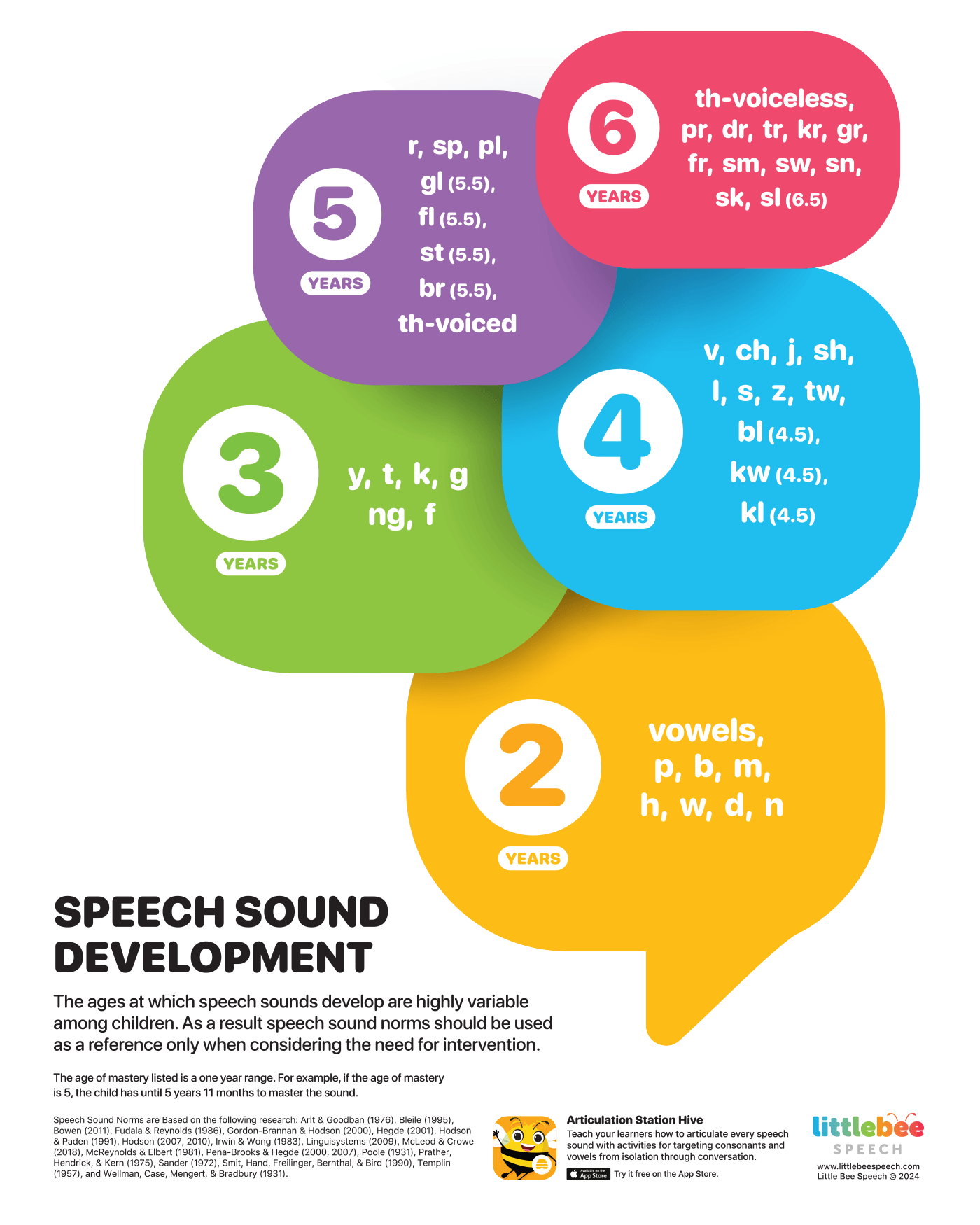
Speech Sound Norms are Based on the following research: Arlt & Goodban (1976), Bleile (1995), Bowen (2011), Fudala & Reynolds (1986), Gordon-Brannan & Hodson (2000), Hegde (2001), Hodson & Paden (1991), Hodson (2007, 2010), Irwin & Wong (1983), Linguisystems (2009), McLeod & Crowe (2018), McReynolds & Elbert (1981), Pena-Brooks & Hegde (2000, 2007), Poole (1931), Prather, Hendrick, & Kern (1975), Sander (1972), Smit, Hand, Freilinger, Bernthal, & Bird (1990), Templin (1957), and Wellman, Case, Mengert, & Bradbury (1931).
Remember to not get hung up on what age the “typical” child masters a specific sound. Use this as a general guide only! You can download a PDF of this Speech Sound Development Chart from the link above or click HERE.
Let us look at each of our children individually and think also of how our child’s speech errors are affecting their ability to communicate, how they may affect their school work, their interactions with their peers and their self esteem. Let’s be advocates for our children’s development and give them the support they need to be effective communicators whether or not it is the “right time” to address a specific sound according to speech sound norms.
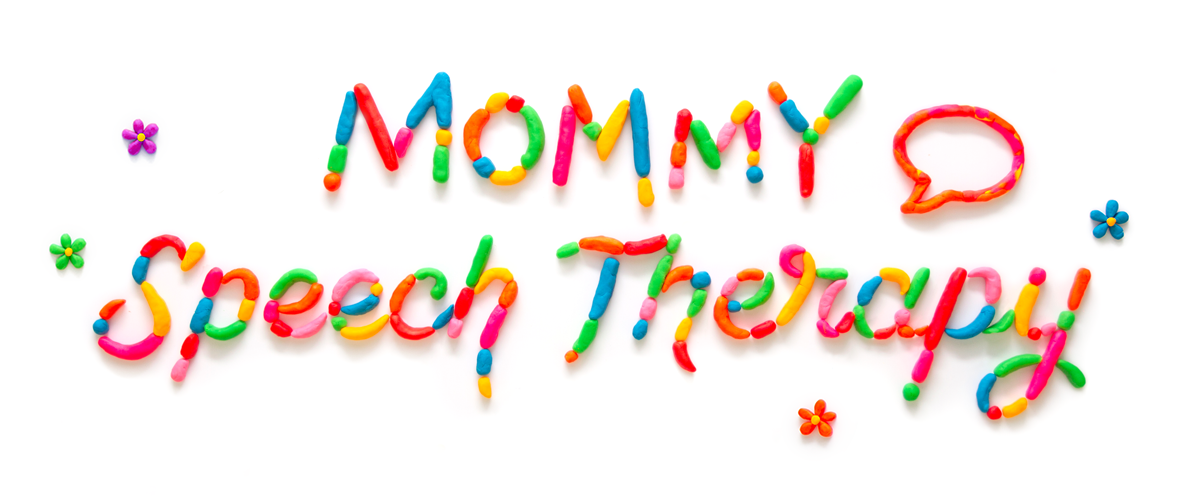
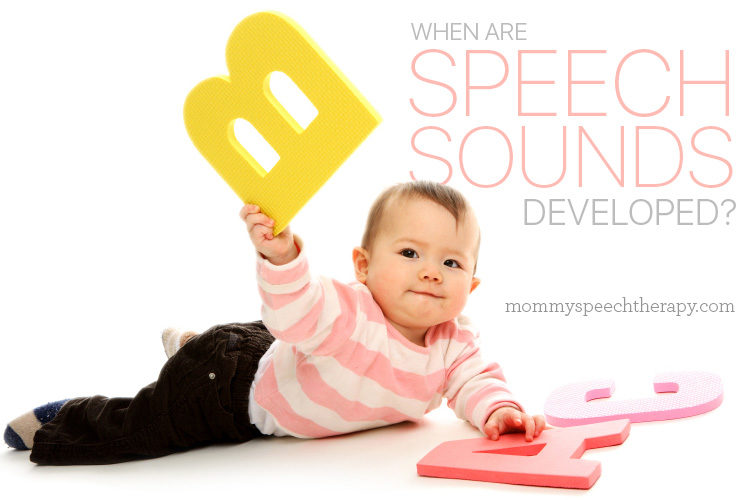
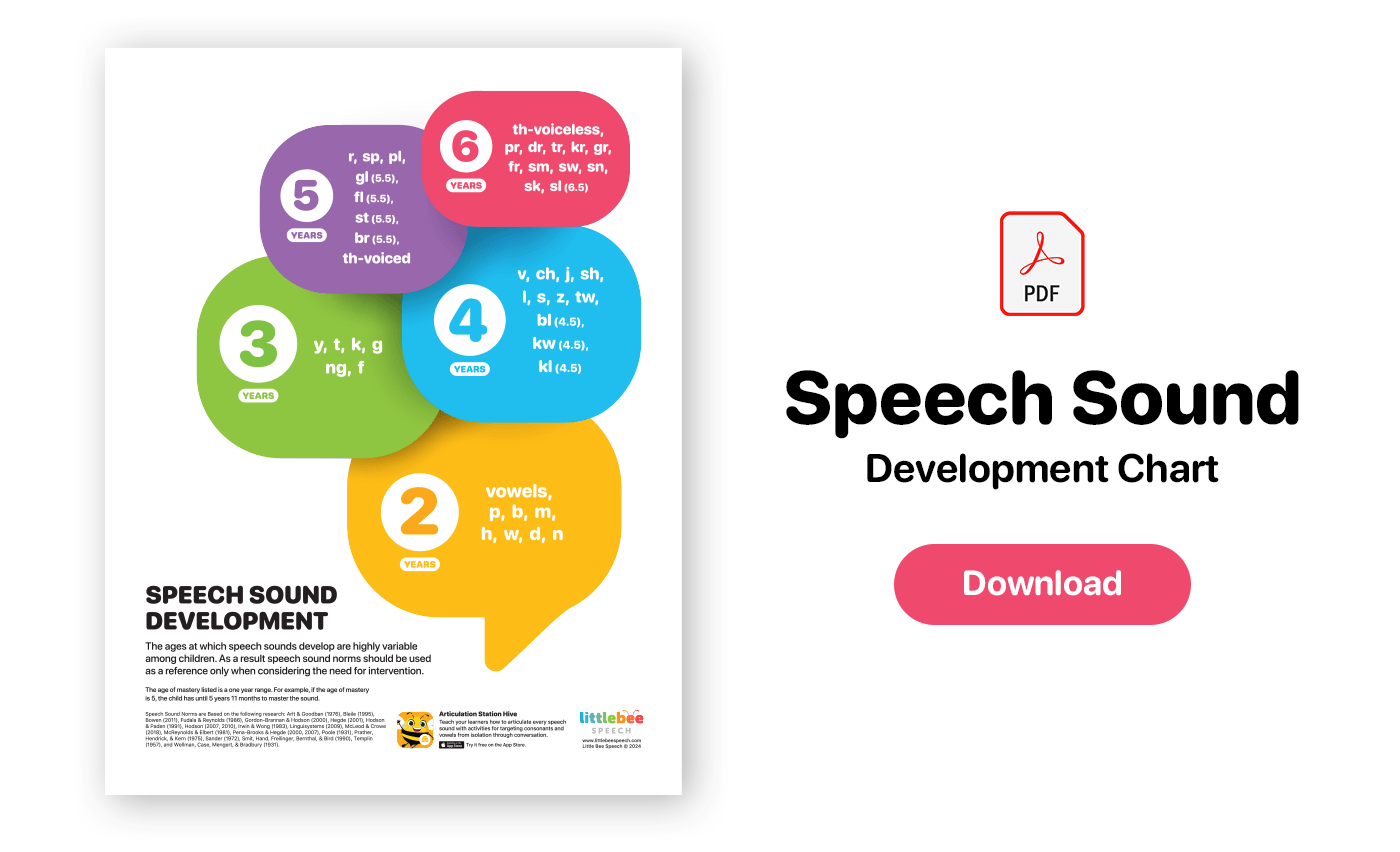
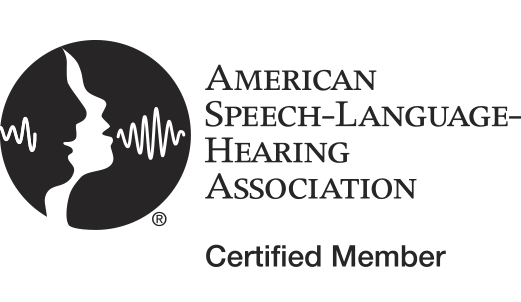


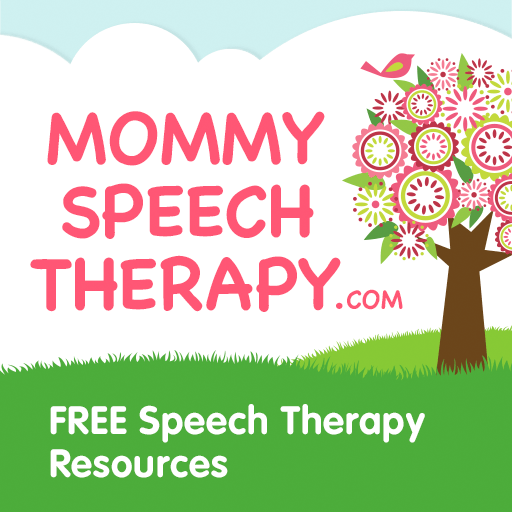
88 Comments